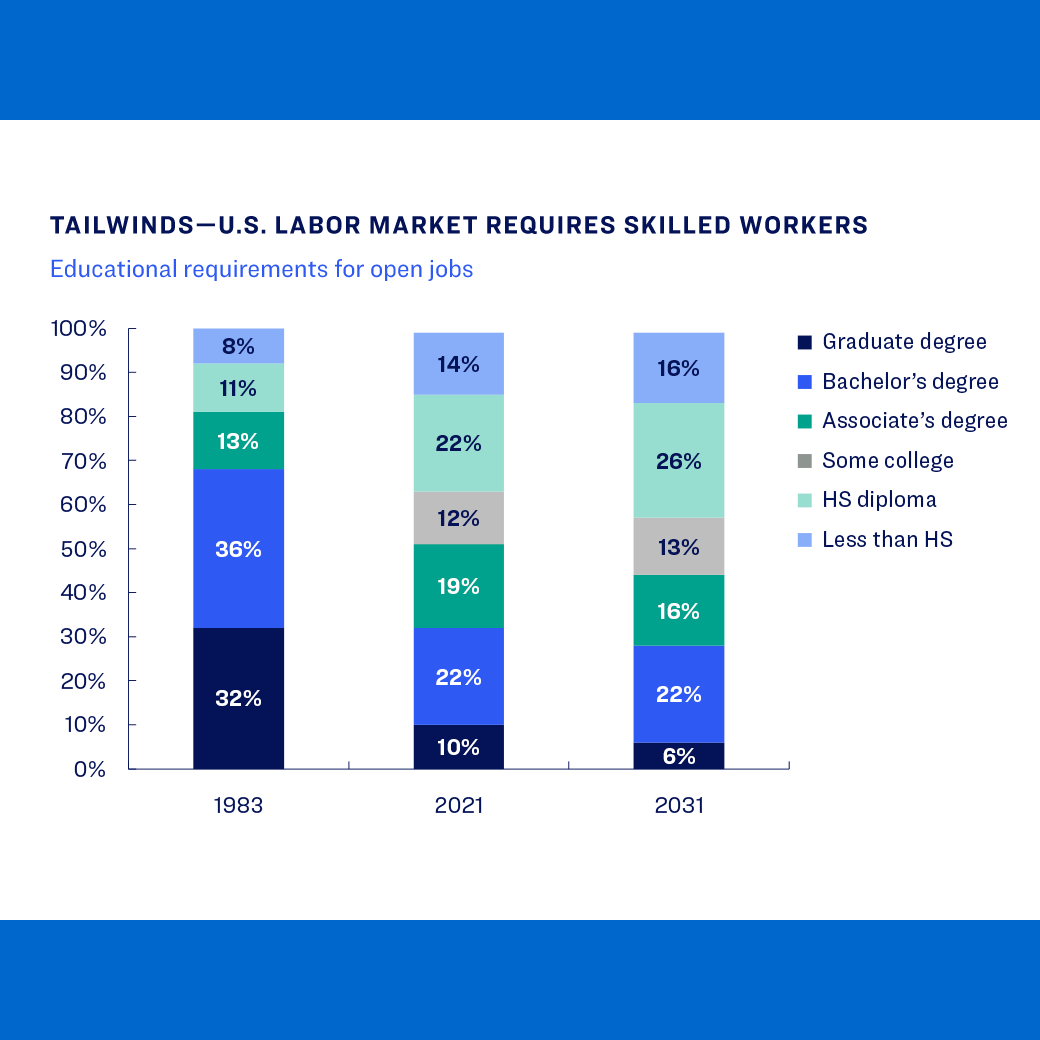Higher education institutions face strong headwinds, despite the substantial earnings premium associated with a post-secondary degree.
Summary
While colleges and universities continue to attract millions of students each year, and many elite schools are flooded with applications, the higher education sector overall is grappling with challenges ranging from rising costs and shifting demographics to technological change and eroding public support. This report outlines how higher education can remain a vital force in shaping individual lives, boosting opportunities for all Americans and preparing new generations to propel society forward.
Key insights
- After rising steadily since 1960, the percentage of recent high school graduates entering college has fallen in the past 15 years, from a high of 70% in 2009 to below 62% in 2023.
- Declining birthrates have contributed to a drop in total enrollment at both public and private institutions, falling from over 18 million in 2010 to 16.6 million in 2023.
- The cost of college increased 143% between 2000 and 2022, significantly outpacing inflation, while tuition discounting and financial aid also rose steadily over that period.
- State governments’ financial support for higher education has declined since 1990, falling from 12% of state budgets to under 9%.
- The education sector has experienced minimal productivity gains over the past 75 years, and technological advancements have yet to make a meaningful impact.


